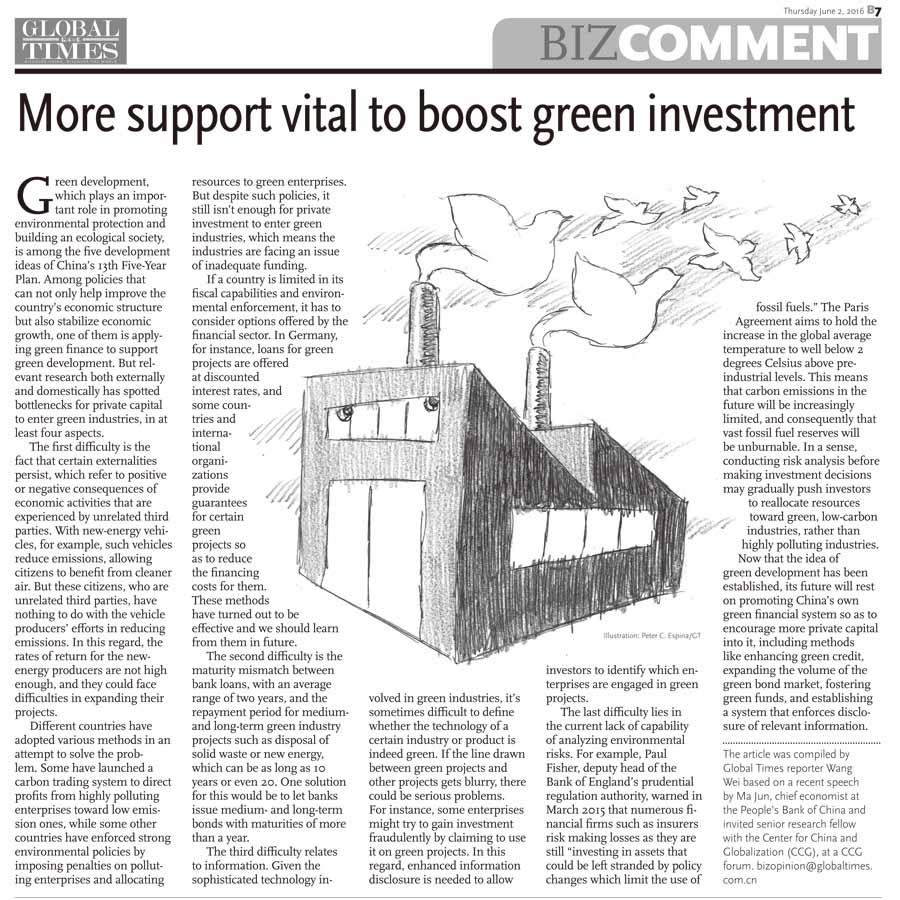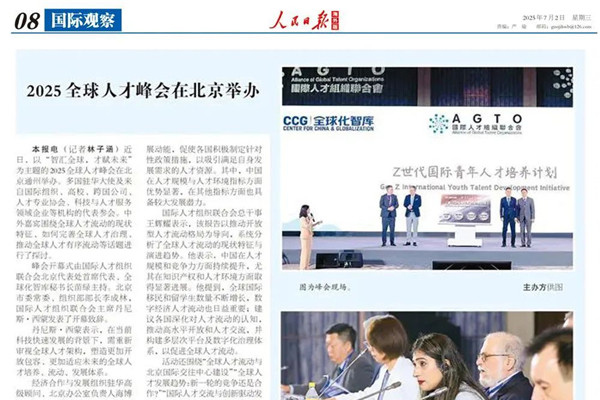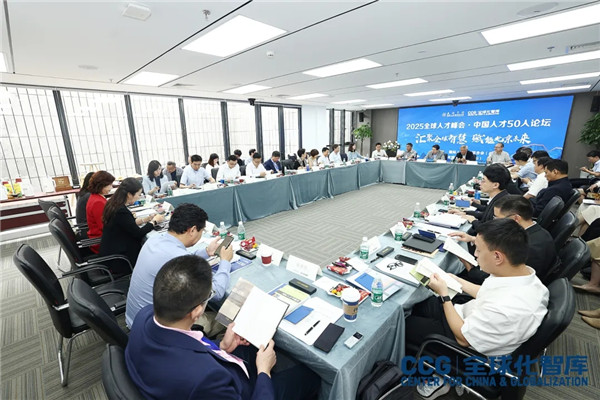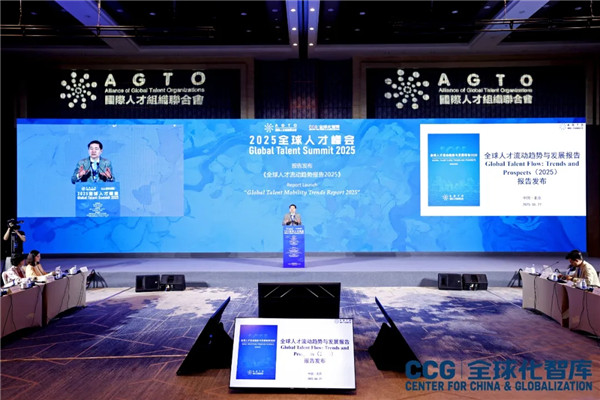【Global Times】More support vital to boost green investment
2016年6月3日
Ma Jun, chief economist at the People’s Bank of China and invited senior research fellow with the Center for China and Globalization (CCG), Speechs at the 2nd Annual China and Globalization Forum, which hosted by CCG.
Green development, which plays an important role in promoting environmental protection and building an ecological society, is among the five development ideas of China’s 13th Five-Year Plan. Among policies that can not only help improve the country’s economic structure but also stabilize economic growth, one of them is applying green finance to support green development. But relevant research both externally and domestically has spotted bottlenecks for private capital to enter green industries, in at least four aspects.
The first difficulty is the fact that certain externalities persist, which refer to positive or negative consequences of economic activities that are experienced by unrelated third parties. With new-energy vehicles, for example, such vehicles reduce emissions, allowing citizens to benefit from cleaner air. But these citizens, who are unrelated third parties, have nothing to do with the vehicle producers’ efforts in reducing emissions. In this regard, the rates of return for the new-energy producers are not high enough, and they could face difficulties in expanding their projects.
Different countries have adopted various methods in an attempt to solve the problem. Some have launched a carbon trading system to direct profits from highly polluting enterprises toward low emission ones, while some other countries have enforced strong environmental policies by imposing penalties on polluting enterprises and allocating resources to green enterprises. But despite such policies, it still isn’t enough for private investment to enter green industries, which means the industries are facing an issue of inadequate funding.
If a country is limited in its fiscal capabilities and environmental enforcement, it has to consider options offered by the financial sector. In Germany, for instance, loans for green projects are offered at discounted interest rates, and some countries and international organizations provide guarantees for certain green projects so as to reduce the financing costs for them. These methods have turned out to be effective and we should learn from them in future.
The second difficulty is the maturity mismatch between bank loans, with an average range of two years, and the repayment period for medium- and long-term green industry projects such as disposal of solid waste or new energy, which can be as long as 10 years or even 20. One solution for this would be to let banks issue medium- and long-term bonds with maturities of more than a year.
The third difficulty relates to information. Given the sophisticated technology involved in green industries, it’s sometimes difficult to define whether the technology of a certain industry or product is indeed green. If the line drawn between green projects and other projects gets blurry, there could be serious problems. For instance, some enterprises might try to gain investment fraudulently by claiming to use it on green projects. In this regard, enhanced information disclosure is needed to allow investors to identify which enterprises are engaged in green projects.
The last difficulty lies in the current lack of capability of analyzing environmental risks. For example, Paul Fisher, deputy head of the Bank of England’s prudential regulation authority, warned in March 2015 that numerous financial firms such as insurers risk making losses as they are still "investing in assets that could be left stranded by policy changes which limit the use of fossil fuels." The Paris Agreement aims to hold the increase in the global average temperature to well below 2 degrees Celsius above pre-industrial levels. This means that carbon emissions in the future will be increasingly limited, and consequently that vast fossil fuel reserves will be unburnable. In a sense, conducting risk analysis before making investment decisions may gradually push investors to reallocate resources toward green, low-carbon industries, rather than highly polluting industries.
Now that the idea of green development has been established, its future will rest on promoting China’s own green financial system so as to encourage more private capital into it, including methods like enhancing green credit, expanding the volume of the green bond market, fostering green funds, and establishing a system that enforces disclosure of relevant information.
The article was compiled by Global Times reporter Wang Wei based on a recent speech by Ma Jun, chief economist at the People’s Bank of China and invited senior research fellow with the Center for China and Globalization (CCG), at a CCG forum. bizopinion@globaltimes.com.cn
From Global Times, 2016-6-2







